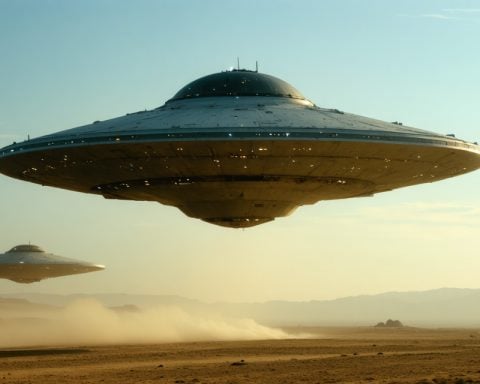As night fell across parts of the United States, a Chinese satellite made headlines with its unexpected and fiery demise in our atmosphere. The GaoJing 1-02, known for its imaging capabilities, was traveling at a staggering 17,000 mph when it reentered near New Orleans late on December 21.
This satellite, which had been dormant since early 2023, lit up the sky as it hurtled northward, captivating onlookers from states like Mississippi, Arkansas, and Missouri. Astrophysicist Jonathan McDowell explained that the satellite had not been operational and its reentry was totally uncontrolled. The spectacle caught the attention of many, leading to a flurry of reports and videos shared online, with people mistaking it momentarily for a meteor shower.
The American Meteor Society noted that they received over 120 sightings of this dazzling fireball. McDowell further clarified that the satellite was small enough that it likely disintegrated entirely before reaching the ground, leaving no substantial remnants behind.
This event follows closely on the heels of another spectacular sighting, as a Chinese rocket had disintegrated earlier over Puerto Rico. Such occurrences remind us of the intriguing interactions between human-made objects and our planet’s atmosphere. Keep your eyes to the sky for more extraordinary celestial events!
Watch the Skies: The Fiery Fall of a Chinese Satellite
Introduction
On December 21, 2023, the night sky over parts of the United States was dramatically illuminated by the reentry of the Chinese satellite GaoJing 1-02. Traveling at an astonishing speed of 17,000 mph, the satellite captivated observers in various states, marking an unforgettable event that not only provided a visual spectacle but also reignited conversations about space debris.
What Happened?
The GaoJing 1-02, primarily known for its imaging capabilities, had been non-operational since early 2023. Its uncontrolled descent became a topic of interest as it lit up the night sky near New Orleans. The American Meteor Society documented over 120 reported sightings of what many initially mistook for a meteor shower, showcasing the public’s fascination with celestial events.
Key Features of GaoJing 1-02
– Speed: The satellite reentered the atmosphere at approximately 17,000 mph.
– Functionality: Previously served imaging purposes but had been dormant since early 2023.
– Size: Small enough to likely disintegrate completely upon reentry, which minimized potential hazards.
Use Cases and Significance
Events like the reentry of GaoJing 1-02 provide a unique opportunity for scientists and space enthusiasts alike to study the behavior of space debris. The implications of such events extend to understanding space safety, potential impacts on Earth, and the long-term strategies needed for managing satellite lifecycles.
Pros and Cons of Space Debris Reentries
Pros:
– Public Engagement: Such events capture public interest and promote awareness of space exploration and its challenges.
– Scientific Insights: They provide valuable data on how different materials behave upon reentry, which can inform future satellite and rocket designs.
Cons:
– Safety Concerns: Uncontrolled reentries can pose risks, although GaoJing 1-02 disintegrated, preventing any risk of debris.
– Environmental Impact: More debris reentering the atmosphere can lead to increased atmospheric pollution and other ecological concerns.
Security Aspects
As the frequency of satellite launches increases globally, the risk of uncontrolled reentries becomes a pressing concern. Authorities are emphasizing the importance of designing satellites with end-of-life protocols to mitigate the risks associated with space debris.
Sustainability Trends in Space
Companies and governments are increasingly focused on sustainable practices in space. Innovations in satellite technology, such as deorbiting mechanisms and designs for easier disintegration upon reentry, are being developed. These efforts aim to reduce the long-term effects of space debris accumulation.
Final Thoughts and Predictions
The GaoJing 1-02 event serves as a reminder of the cosmos’s ongoing dance between human technology and natural phenomena. As we move toward a future with increasing industrial activity in space, lessons learned from such incidents will be crucial. Continued monitoring and smarter satellite management practices are essential in preventing potential hazards while still marveling at the wonders of our universe.
For more on space events and advancements, visit NASA’s official website.


















